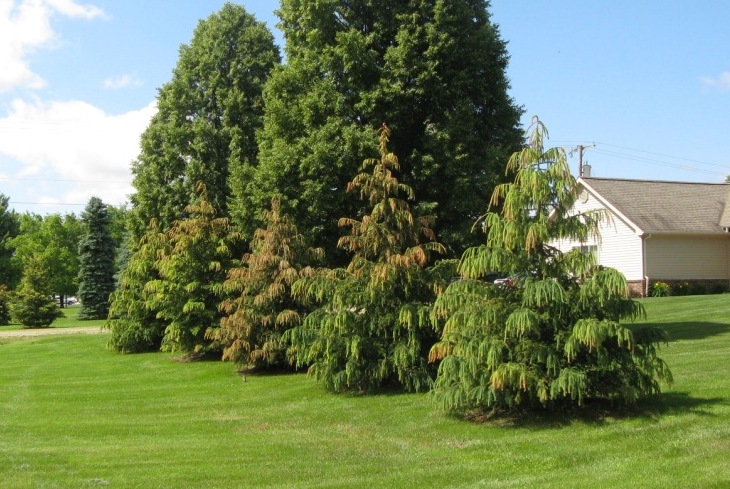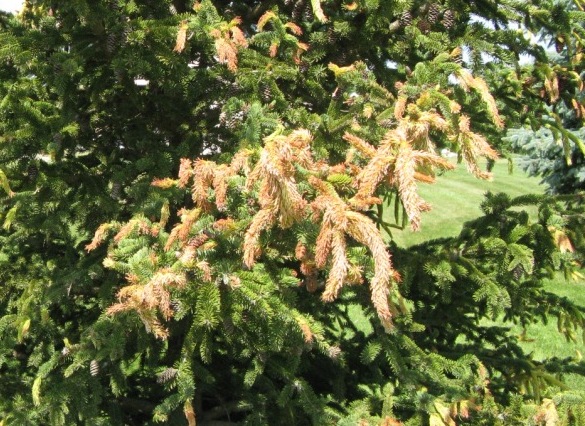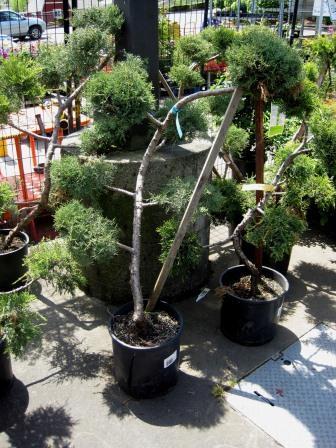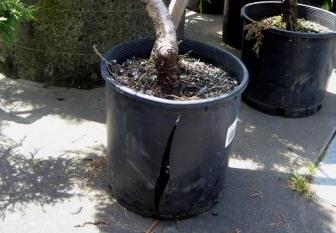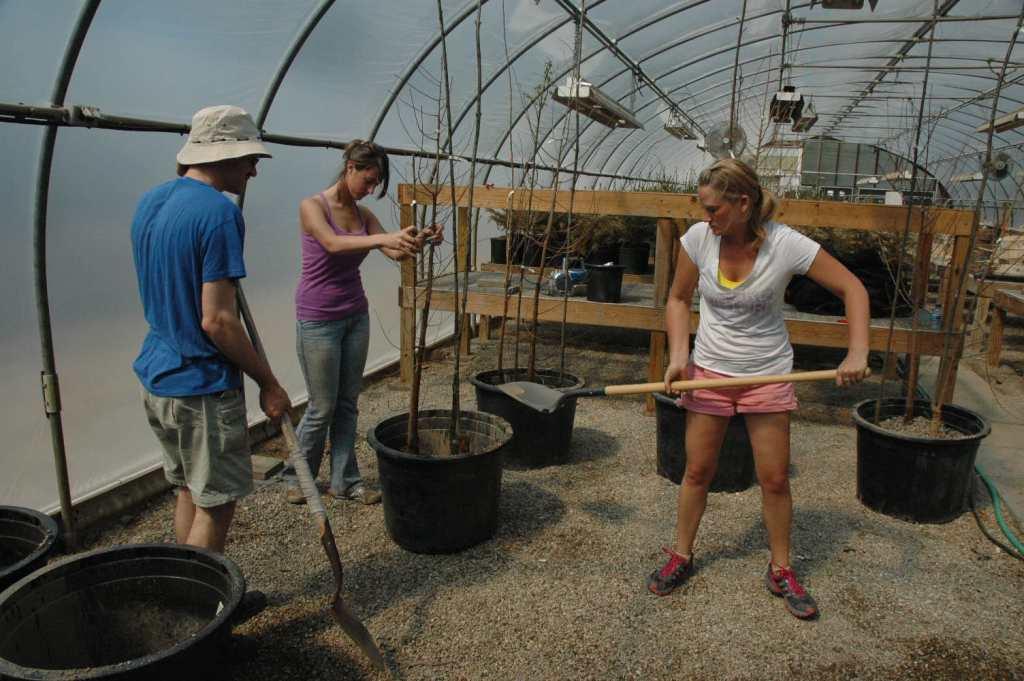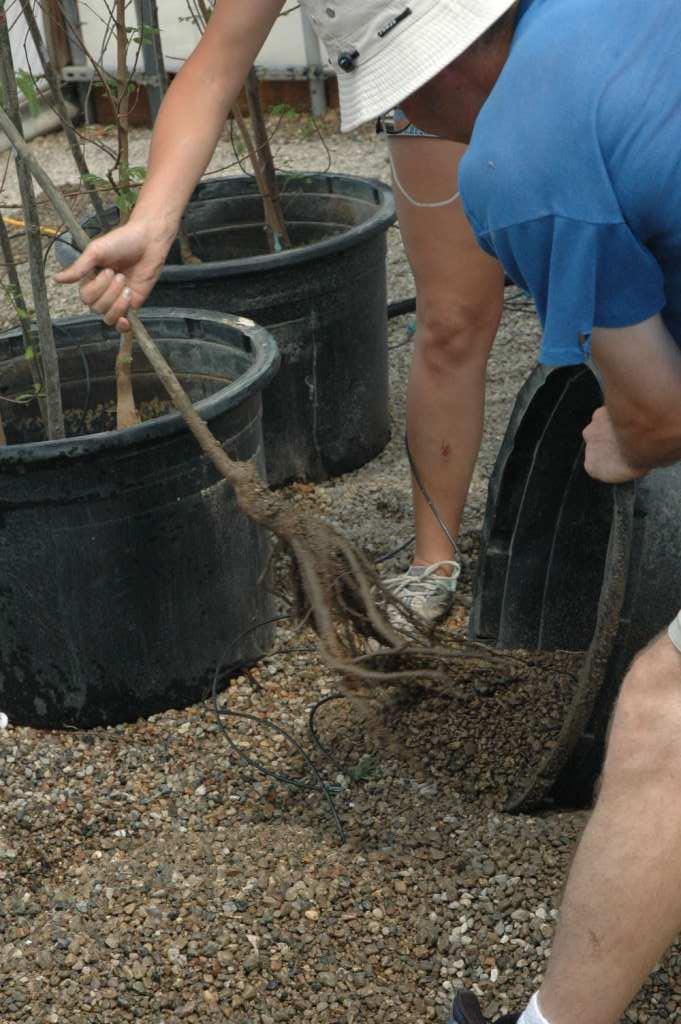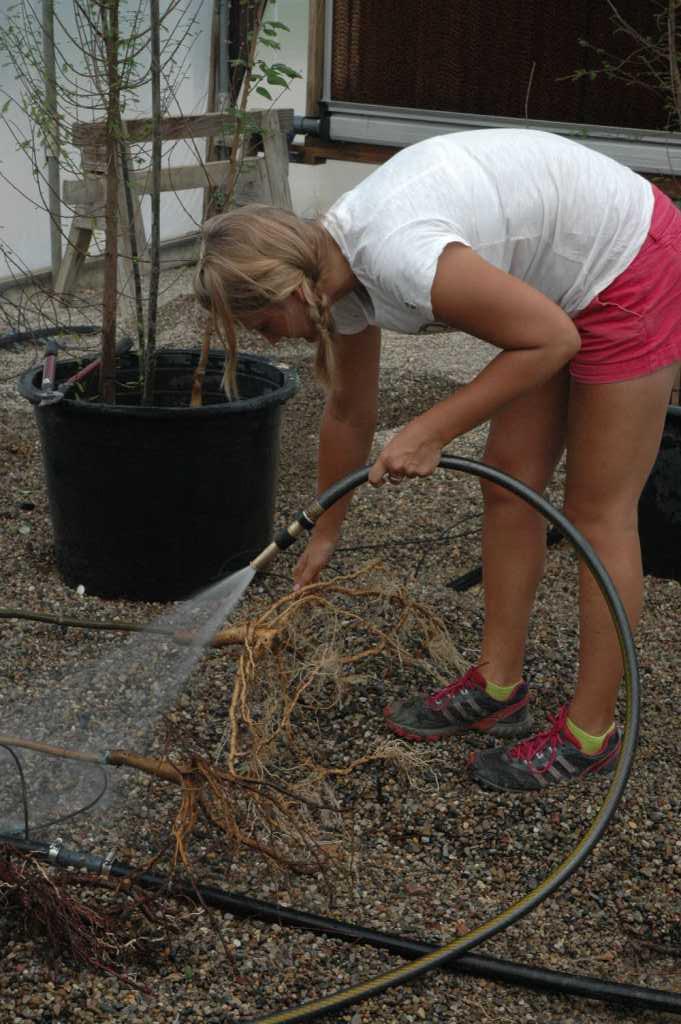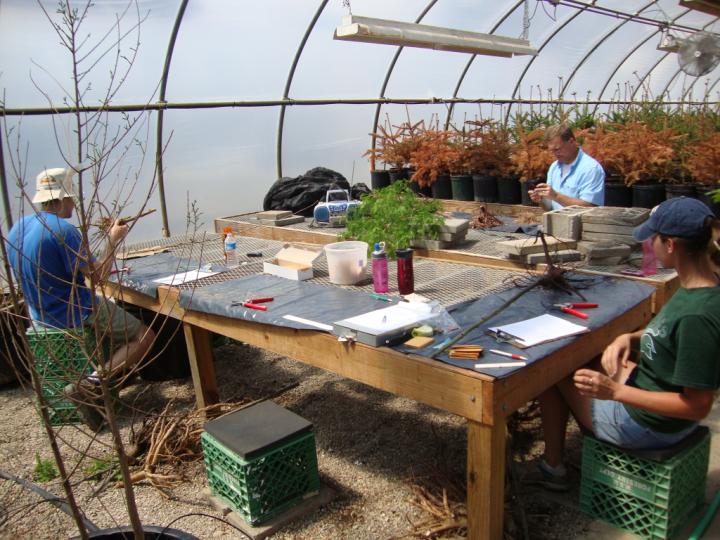In my last post I announced that we would be conducting the first landscape transplant experiment designed by social media. We have about 100 ‘Bloodgood’ plane trees in 25 gallon containers that are leftover from a recent nursery trial. The trees will be planted at our Hort station and receive minimal care after planting beyond an initial watering and a kiss for luck. I asked for some suggestions for potential treatments and got some good suggestions. Unfortunately, one thing I forgot to point out is that I have essentially no budget for this project. So trying to determine whether or not roots are mycorrhizal, or bringing in B&B trees for comparison, are beyond our capabilities at this juncture.
We did have some interest in determining the effects of manipulating rootballs for container-grown trees. These trees have been in pots for 2 years and I absolutely guarantee they are pot bound. Definitely a good opportunity to look at shaving or teasing rootballs.
There are a couple of other items that I am curious about.
One is crown reduction thinning. In forest nurseries trees are often top-pruned to reduce shoot-root ratio and increase transplant success. Obviously we would’t top landscape sized trees, but can selective pruning to reduce the ratio of crown area to root area reduce water stress and increase survival?
Along these lines, there is a lot of marketing of plant growth retardants to reduce transplanting stress. The most common is probably paclabutrazole – sold under various trade names including Cambistat http://www.treecaredirect.com/Cambistat-Tree-Growth-Regulator-p/3101.htm Does it work?
I’ve also been curious about hydrogels. I’ve long been a skeptic but have had several arborists tell me they’ve used them successfully – of course they didn’t leave an untreated control.
Then, of course, there’s Bioplex. http://www.bio-plex.com/pdfs/Bio-Plex2009Catalogue.pdf It might be easier to list what isn’t in Bioplex than what it contains. I suspect whatever effect it has is largely related to small amount of nutrients it contains.
Lastly, I still adhere to the notion that fertilizing trees at planting is not necessarily the source of all evil in the world and may even be a good thing. Here I get a chance to provide myself wrong and apply a dose of Osmocote in the planting hole.
OK that’s the background – time to vote. The link below should take you to a Survey Monkey survey. You can vote for more than one item, but please vote for no more than three.
http://www.surveymonkey.com/s/W3YGGSD
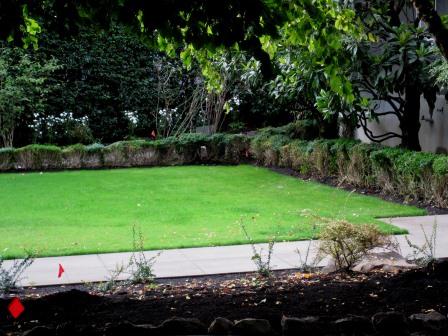
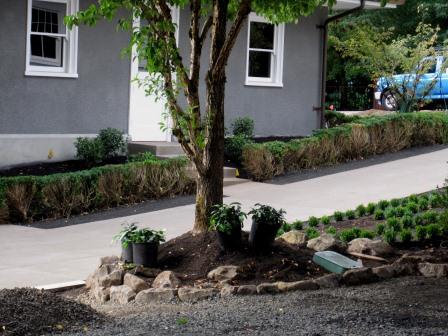 And again
And again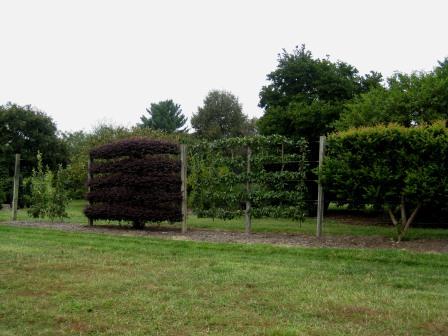
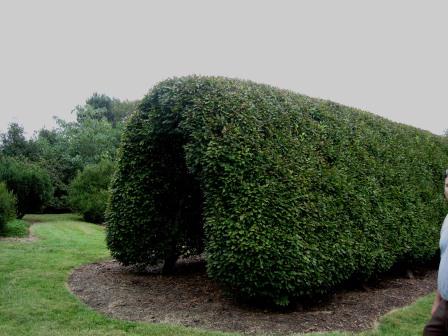
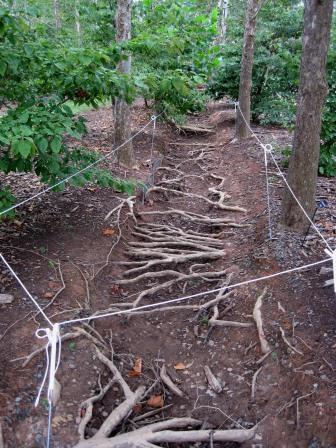
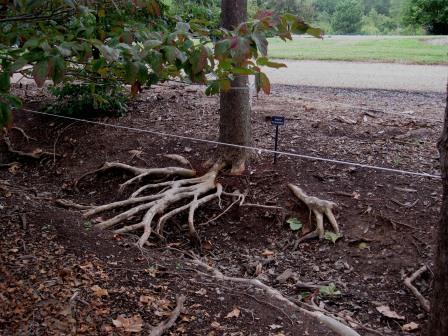


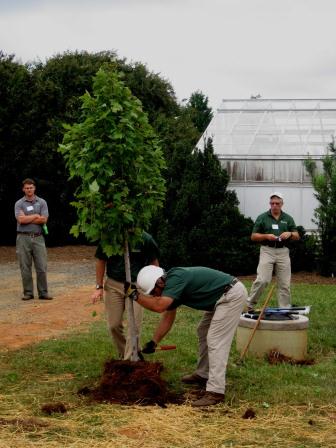
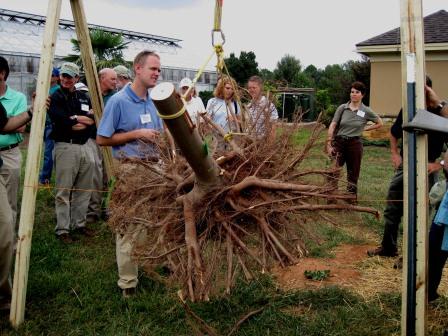
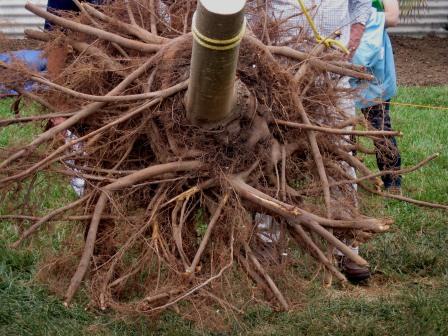

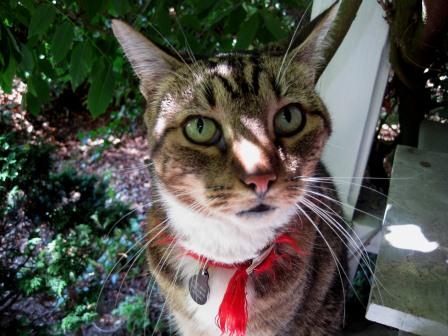 One of the nonbotanical garden residents
One of the nonbotanical garden residents

 A selection of PlantAmnesty humor
A selection of PlantAmnesty humor





